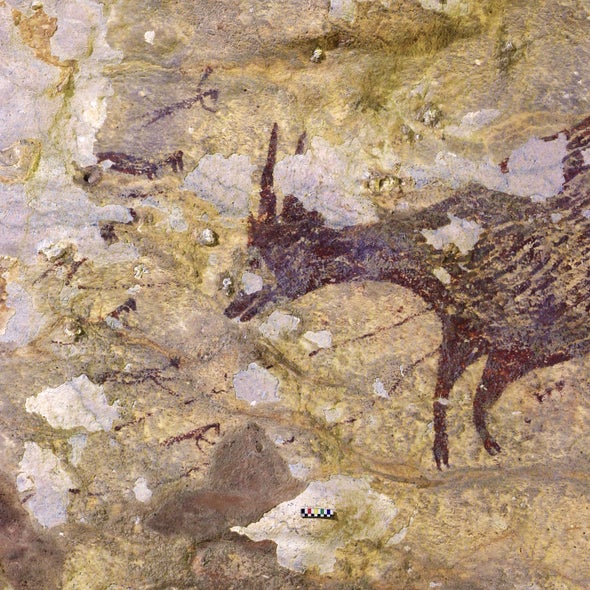by KATE WONG

Archaeologists have dated the image to at least 43,900 years ago, but their interpretation has met with doubt
In Room 67 of the Prado Museum in Madrid, Francisco Goya’s Saturnenthrallsviewers with a scene of abomination. The painting depicts the Greek myth of Cronus (Saturn in the Roman version), who ate his children for fear of being overthrown by them. Critics have interpreted Goya’s rendition—the cannibal god shown wide-eyed with apparent horror, shame and madness as he devours his son—as an allegory of the ravages of war, the decay of Spanish society, the artist’s declining psychological state. It is one of the great narrative artworks of all time. Vanishingly few people attain such mastery of visual storytelling, of course, but even in its lesser forms, such creative expression is special: only our species, Homo sapiens, is known to invent fictional tales and convey them through representational imagery.
Archaeologists have eagerly sought the origins of our distinctive artistic behavior. For a long time, the oldest examples of figurative art (as opposed to abstract mark making) and depictions of fictitious creatures all came from sites in Europe dated to less than 40,000 years ago. But in recent years, researchers have uncovered older instances of figurative art in Southeast Asia. Now archaeologists working on the island of Sulawesi in Indonesia have found the oldest figurative art to date. In a paper published on December 11 in Nature, Maxime Aubert, Adhi Agus Oktaviana and Adam Brumm, all at Griffith University in Australia, and their colleagues report that the art—a cave painting—appears to shows several fantastical humanoid figures hunting real-life animals. If they are right, the find could also constitute the oldest pictorial record of storytelling and supernatural thinking in the world.
Scientific American for more
